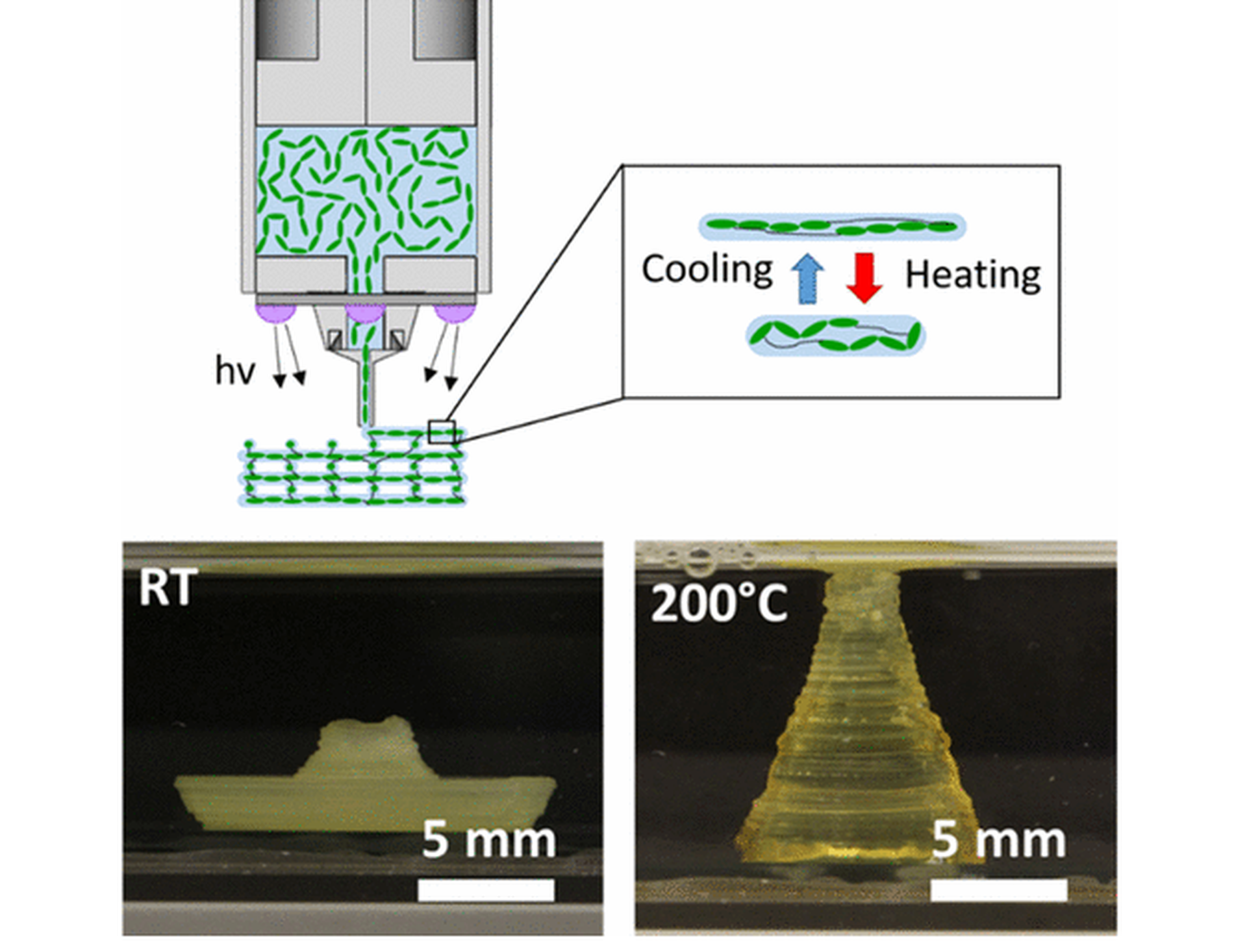Ravi Shankar and collaborators make a breakthrough in 4D printing

Four-dimensional (4D) printed objects are 3D structures capable of changing shape in time. This transformation is achieved by using stimuli-responsive materials. University of Pittsburgh Professor Ravi Shankar and collaborators at the University of Texas at Dallas have now demonstrated a platform that may help improve the way researchers morph these structures.
The collaboration was led by Taylor Ware, assistant professor of bioengineering at UT Dallas, and Cedric Ambulo, a graduate student researcher in Ware’s lab. The study, “Four-dimensional Printing of Liquid Crystal Elastomers” (DOI: 10.1021/acsami.7b11851), was published in ACS Applied Materials and Interfaces in October 2017. Since its release, it has achieved recognition as being “first of its kind” and was awarded best poster at the 2017 International Liquid Crystal Elastomer Conference.
“Previous strategies for stimuli-responsive materials require mechanical programming, which involves physically manipulating the material by stretching or bending it to help program the actuation,” said Shankar, professor of industrial engineering at Pitt’s Swanson School of Engineering. “In this work, we demonstrate a platform for programming the molecular-level order in macroscopic 3D structures so that the actuation can be triggered without external loading or training.”
Their platform works by orienting molecules within a printable ‘ink’. On exposure to light, the ink cross-links into a rubbery material while maintaining molecular orientation. By controlling how the material is deposited, they can build 3D structures with encoded molecular orientation which allows for the control of the structure’s shape change when it is heated.
The research team used liquid crystal elastomers (LCE), a polymer that can change shape in response to a variety of stimuli, including heat and light. “In order to undergo reversible shape change, LCEs should be cross-linked in an aligned state,” explained Shankar. “To do this, we controlled the print path used during 3D printing, whereby 3D structures with locally controlled and reversible stimulus response can be fabricated into geometries not achievable with current processing methods.”
The resulting 4D models are capable of twisting, bending, and curving on demand. The structure will stay in one state until it is prompted by a stimulus to change shape. By printing objects with controlled geometry and stimulus response, the research team can create magnified shape transformations using snap-through instabilities.
“Snap-through instabilities can be seen in nature when observing a venus flytrap catching their prey. The snapping action is used to magnify the power density and speed of actuation,” said Shankar. “Our group mimicked this action by creating curved geometries encoded with molecular-level programming that when exposed to a thermal stimulus, evolve and snap between discrete shapes.”
Scientists are just scratching the surface for the future of this technology. According to Shankar, “There is a lot of potential for innovation with these unique materials. There are numerous applications for 4D printing including advancements in soft robotics, implantable medical devices, and consumer products.”
This material is based upon work supported by the Air Force Office of Scientific Research under award number FA9550-17-1-0328. Any opinions, finding, and conclusions or recommendations expressed in this material are those of the author(s) and do not necessarily reflect the views of the United States Air Force.
Contact: Liza Allison
